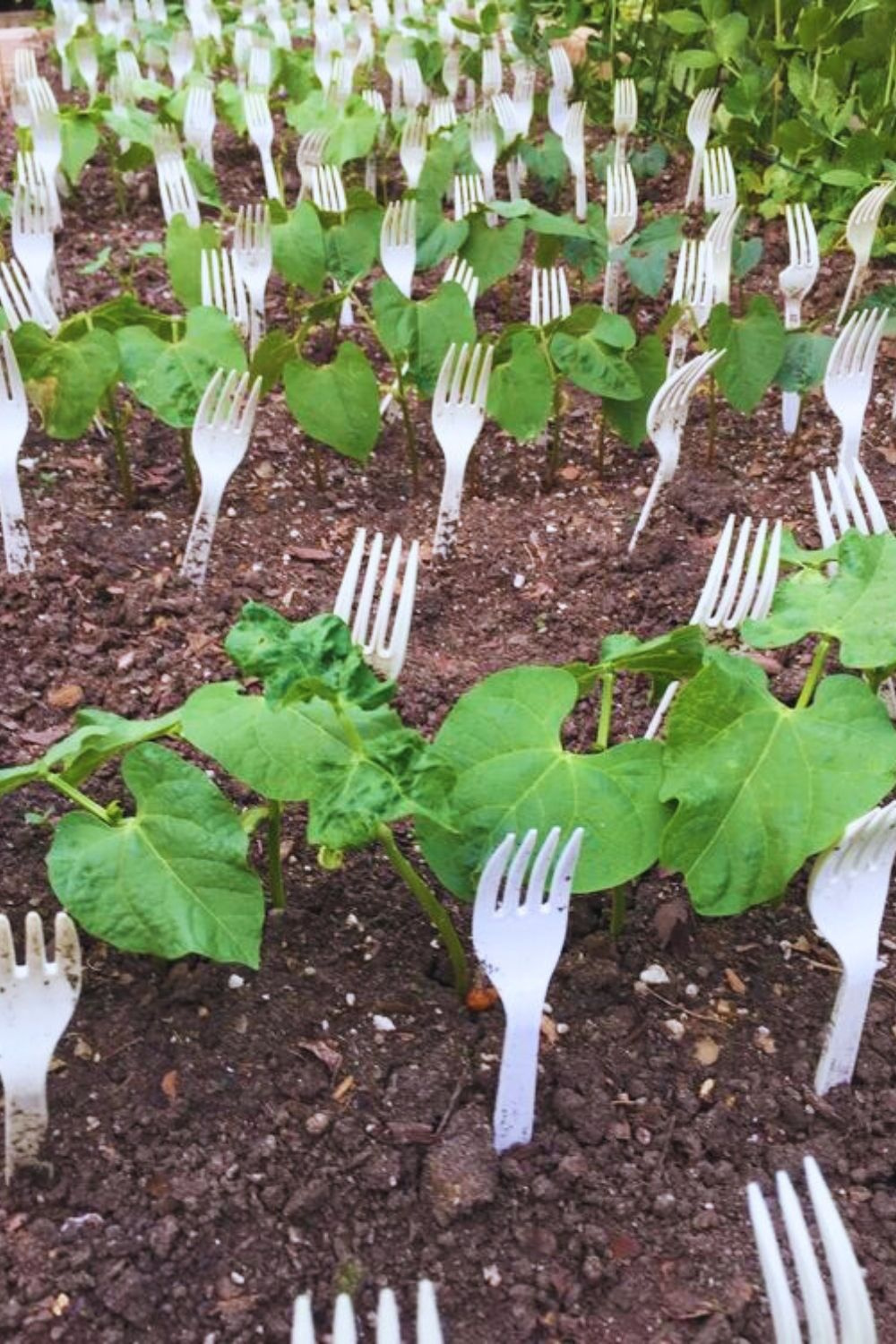
Using plastic forks as a deterrent to keep animals out of your garden is an inexpensive and effective strategy. This method works by creating a physical barrier that discourages animals like cats, dogs, rabbits, and other small critters from digging, trampling, or eating your plants. Here’s how you can do it:
Materials Needed:
- Plastic forks (as many as needed for your garden space)
Step-by-Step Guide:
1. Prepare the Forks:
- New or Used: You can use new plastic forks or recycle used ones. Clean used forks thoroughly before using them in your garden.
2. Determine Placement:
- Spacing: Decide where to place the forks based on the areas most affected by animals. Focus on the perimeter of the garden beds, around individual plants, or in rows between plants.
- Height: Forks should stick up from the ground with the tines facing upward. This creates a spiky barrier that is uncomfortable for animals to step on or dig through.
3. Insert the Forks:
- Orientation: Insert the forks into the soil handle-first, with the tines sticking out. Place them about 1-2 inches apart for maximum effectiveness.
- Depth: Push the forks into the ground so they are stable and not easily knocked over. The tines should be pointing up and slightly above the soil surface.
4. Create a Pattern:
- Consistent Coverage: Create a consistent pattern across the areas you want to protect. For larger areas, you might need to use more forks and space them evenly.
- Rows: For row planting, place forks in rows between the plants. This will prevent animals from walking down the rows and damaging the plants.
5. Monitor and Adjust:
- Check Regularly: Monitor the garden regularly to see if the forks are working. If you notice animals still getting in, add more forks or adjust the placement.
- Reinforce: If some forks get knocked over or displaced, put them back in place to maintain the barrier.
Additional Tips:
- Visibility: Plastic forks are often white, which makes them visible and might also act as a visual deterrent for some animals.
- Blending In: If you prefer a less noticeable barrier, you can paint the forks green or brown to blend in with the garden.
- Combine Methods: Combine this method with other deterrents like motion-activated sprinklers, fencing, or repellents for added effectiveness.
- Consider Safety: Ensure that the forks are placed securely to prevent them from being easily dislodged, which could cause littering or pose a hazard to children or pets.
Benefits of Using Plastic Forks:
- Cost-Effective: Plastic forks are inexpensive and can often be found around the home.
- Non-Toxic: Unlike chemical deterrents, plastic forks are non-toxic and safe for plants and soil.
- Reusable: Plastic forks can be reused each season, making them a sustainable option.
- Easy to Install: This method requires minimal effort and can be quickly implemented.
By using plastic forks in your garden, you create a simple yet effective barrier that deters animals from causing damage, allowing your plants to thrive.
